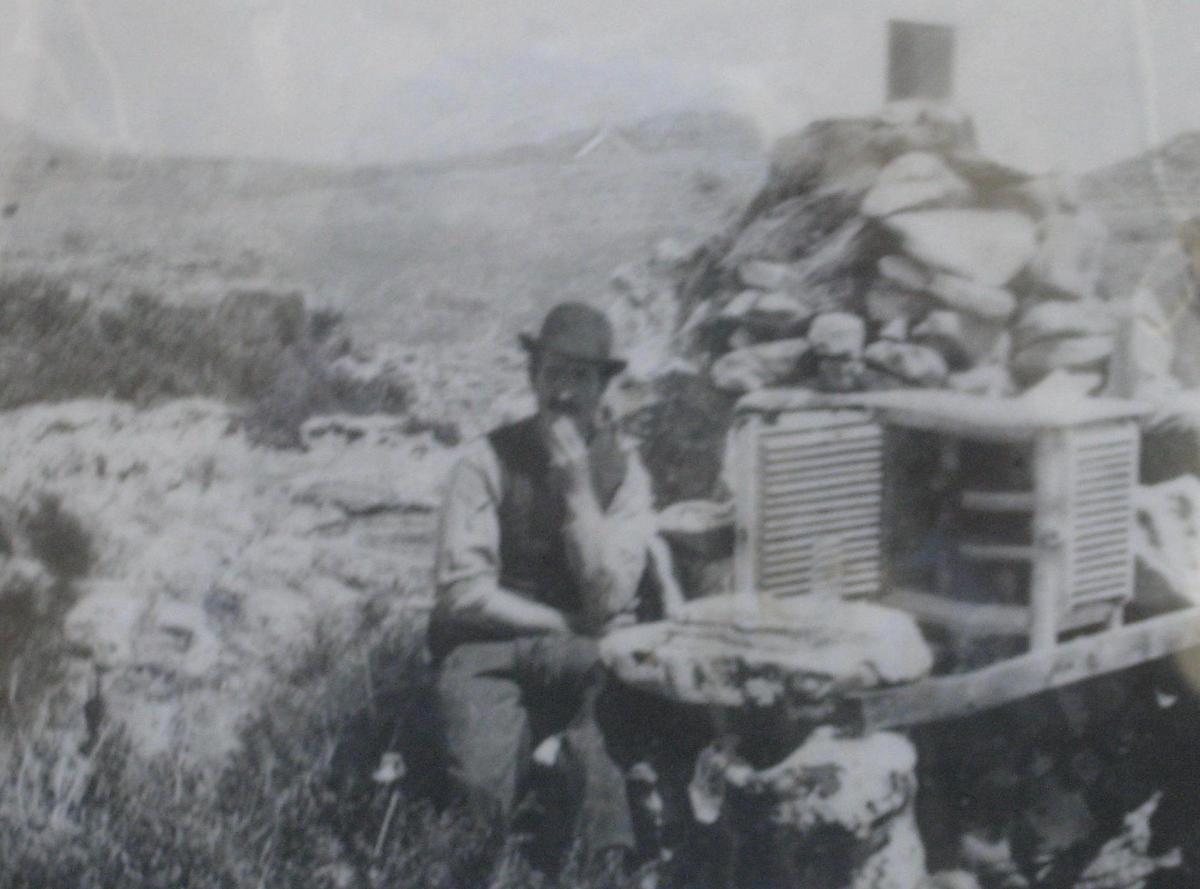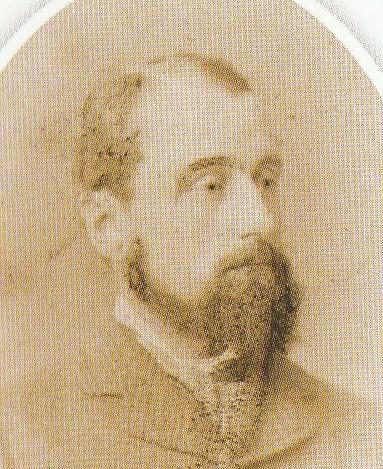
Disclaimer: Any views expressed by individuals and organisations are their own and do not in any way represent the views of The Heritage Portal. If you find any mistakes or historical inaccuracies, please contact the editor.
It is quite remarkable how young and relatively inexperienced engineers arrived in this country in the 19th century and, from scratch, established a branch of their profession in a remote and rather backward part of the world without the benefit of a mentor or role model.
A typical example was John Gamble, who at the age of 31 came to South Africa and set up the foundations for hydrological studies and irrigation engineering in this part of the world.
John Gamble
John Gamble was born in 1842, the son of a naval surgeon, and was a mathematical prodigy. He won a scholarship to Oxford, was a brilliant student, and after taking his degree remained at the University to become a lecturer in mathematics at Lincoln College. During this period he was awarded the Gold Medal for the Johnson Memorial Prize Essay, his subject being "The Laws of Wind".
But academic life was not for him. Suddenly in 1866 he decided to take articles with the well-known engineer Sir John Hawkshaw. After an initial spell on the construction of the docks at Hull, he became Resident Engineer on the main sewers a Brighton, where he put his mathematical skills to good use in devising a system of survey measurements to ensure that the sinuous tunnels were correctly located.
In 1874 Hawkshaw was appointed by the Brazilian Government to report on the suitability of several harbour sites in that country and Gamble and three assistants set sail for Pernambuco. Shortly after work commenced two of his colleagues took ill and died, while the third was overcome by the heat and had to return home. Gamble continued with one new assistant, who later spoke in glowing terms of his superior's energy in carrying out work in difficult and dangerous circumstances. The survey was completed after nine months of toil under the most trying conditions, and Gamble returned to London to draft his report. Almost immediately he was appointed to the new post of Hydraulic Engineer to the Cape Colony.
At this time almost all the engineers in South Africa were engaged in railway or road work. Despite his lack of similar experience Gamble lost no time in getting to grips with his duties, and he soon impressed his political masters that his plans and requests were practical and worthy of support. He undertook an extended tour of his area of responsibility, and compiled useful situation reports which were acted upon in later years. His reports also led to an Act of Parliament which formed the basis of the future strategy for irrigation in the Colony and led to the eventual creation of the Department of Irrigation.
At Port Elizabeth he made recommendations for a proper water supply, which the Municipality acted upon and for a time possessed "the finest waterworks in the colony". Other towns and villages received his attention: among others King Williamstown, East London, Queenstown, Somerset East, Riversdale and Graaff Reinet benefited from his expertise and enjoyed adequate water supply for some years.
Gamble prevailed on the Government to set up a rain gauge at each magistracy. As a result some 250 reliable stations were established, and Gamble was then able to produce the first good rainfall maps for the colony. This led to the production of the first daily weather reports. He compiled a catalogue of all publications about Southern African climate and also collated a list of all reliable altitude records of the land form.
His practical work led to the construction of several irrigation schemes and dams. One of the first was at Sak River in the driest part of the Karoo where the irrigation scheme was viable for many years. On the other hand he incurred the ire of some colonists by turning down a proposal for a large dam on the Buffels River near Murraysburg, which according to the promoters, would have transformed the district into an agricultural paradise. Since the dam has never been built we can conclude that Gamble knew his hydrology!
Although his job description did not include assistance to the Cape Town Municipality, the government allowed him to become involved in the search for augmentation of the local water supply, and he located the position for the first reservoir on Table Mountain and the Woodhead supply tunnel. When the Molteno reservoir collapsed in 1882, Gamble was appointed to find the cause and remedy.
While in South Africa Gamble met and married Miss Constance Brounger, the daughter of the Colonial Railway Engineer William Brounger, and they produced three daughters. He took a keen interest in the SA Public Library, the Philosophical Society and other scientific and cultural institutions at the Cape, and became an examiner and Council Member of the South African College.
In 1886 the world and the Colony experienced something of a depression, and with short-sighted zeal the government abolished the office of Hydraulic Engineer. Gamble returned to England, and shortly afterwards was appointed to a similar post in Ireland. He immediately set to work on assessing schemes for the Shannon and Barrow rivers, and with Parliamentary approval he produced designs and surveys for the proposed works. Sadly he did not live to see his projects implemented. Ironically, having survived the rigours of foreign climes, he succumbed to typhoid fever in the British Isles and died in November 1889.
It is quite obvious that Gamble, who was affectionately known as "Honest John", was a personality of some status, both professionally and socially. His opinion was sought on various engineering matters, and he was awarded the Telford Medal and three Telford premiums for papers presented at the ICE. He is described as a person who "combined great mental gifts with a singular sweetness and modesty of character". As mentor to several engineers he made a considerable impression on the profession and he can rightly be called the father of irrigation and hydrology in South Africa.
Main image: Gamble on Table Mountain with met instruments (Past Masters)
Tony Murray is a retired civil engineer who has developed an interest in local engineering history. He spent most of his career with the Divisional Council of the Cape and its successors, and ended in charge of the Engineering Department of the Cape Metropolitan Council. He has written extensively on various aspects of his profession, and became the first chairman of the History and Heritage Panel of the South African Institution of Civil Engineering. Among other achievements he was responsible for persuading the American Society of Civil Engineers to award International Engineering Heritage Landmark status to the Woodhead dam on Table Mountain and the Lighthouse at Cape Agulhas. After serving for 10 years on SAICE Executive Board, in 2010 he received the rare honour of being made an Honorary Fellow of the Institution. Tony has written manuals, prepared lectures and developed extensive PowerPoint presentations on ways in which the relationship between municipal councillors and engineers can be more effective, and he has presented the course around the country. He has been a popular lecturer at UCT Summer School and has presented five series of talks about engineers and their achievements. He was President of the Owl Club in 2011. His book "Ninham Shand – the Man, the Practice", the story of the well-known consulting engineer and the company he founded, was published in 2010. In 2015 “Megastructures and Masterminds”, stories of some South African civil engineers and their achievements was written for the general public and appeared on the shelves of good bookstores. “Past Masters” a collection of his articles about 19th century South African Engineers is also available from the SAICE Bookshop.
Comments will load below. If for any reason none appear click here for some troubleshooting tips. If you would like to post a comment and need instructions click here.

